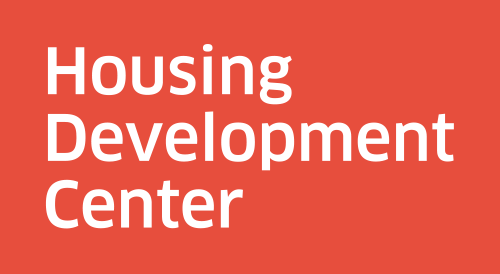Two very different developments, combined in one project, provide 93 deeply affordable homes.
When Salem Housing Authority (SHA) inherited the Southfair Apartments from the City of Salem, in 1999, the 40-unit apartment complex was “almost a condemned property,” says SHA Assistant Housing Administrator and Director of Development and Strategy Jessica Blakely. SHA turned the property around in the course of two decades of ownership, eradicating chronic prostitution and drug problems and investing in physical repairs. But the challenge of financing a much-needed comprehensive renovation remained unsolved as Southfair neared 30 years of age.
As Southfair’s preservation needs grew more urgent, the City of Salem tapped SHA to undertake another real estate project. The goal: to acquire Yaquina Hall, formerly a nurse’s dormitory on a vacated state hospital campus, and transform it into deeply affordable apartments. The path to modernize the 80-year-old building led through a thicket of environmental review and historic preservation requirements. SHA’s commitment to serve residents exiting chronic homelessness, including 20 individuals experiencing serious mental illness, brought additional complexities. Fortunately, the Yaquina project enjoyed the advantages of strong community support and access to specialized funds. The project finance team, led by Andy Wilch and Nicole Utz at SHA, together with Philip Dochow at HDC, saw an opportunity to use Yaquina’s upward momentum to lift Southfair, too.
“The desirability of Yaquina Hall, and its ability to generate historic tax credits, really regenerated Southfair.”
The team married the two projects, using Yaquina’s financial strengths and the advantages of a larger project size to meet both properties’ financial needs. They secured sources totaling $29.4 million, including historic tax credits, 4% low income housing tax credit equity, HOME and CDBG funds, and a hefty grant from Oregon Health Authority, to redevelop Yaquina and to renovate and recapitalize Southfair.
“The desirability of Yaquina Hall, and its ability to generate historic tax credits, really regenerated Southfair,” Blakely explains.
Joined by architect AC & Co, general contractor Walsh Construction, and HDC construction managers France Fitzpatrick and Debbie Page, the Yaquina-Southfair team planned, designed, and undertook construction at both sites simultaneously.
The team and construction crews struggled against supply shortages, in a market impacted by the pandemic, to meet aggressive timelines and minimize disruption to relocated residents. At the Southfair site, building envelopes (windows, doors, siding, roofs) were replaced, grounds and play structures improved, and an unused community building repurposed to provide two new fully accessible housing units. At Yaquina Hall, crews reconfigured the building’s whole interior, except for corridor walls kept intact to meet historic preservation requirements. Custom windows were installed to mimic historic originals, plaster was repaired, and giant boilers (“locomotive-sized,” says Fitzpatrick) were removed. New community rooms, laundry facilities, and a second elevator were installed, and grounds and sidewalks improved.
Roughly five years after the project was launched, a gleamingly restored and redeveloped Yaquina Hall and durably updated Southfair Apartments opened to residents.
For Blakely, one of the most satisfying outcomes of the Yaquina-Southfair project is that no household living at either property needs to pay more than 30% of its income toward rent. Many Southfair residents saw their rents decrease, in fact. (Across both projects, 91 of 93 total units are covered by project-based Section 8 vouchers, an addition of 32 vouchers to Southfair’s previous eight. The remaining two units can be rented by households who have tenant-based vouchers or other forms of rent assistance, Blakely says.)
“...Getting into a property where they know they can stay forever—they were blown away that they lived in something so beautiful.”
Though several relocated Southfair households didn’t qualify to return to their apartments because their incomes exceeded maximum limits, even their stories had silver linings: Two of the over-income households used their relocation funds to purchase their own homes. Another received an income boost, shortly after being relocated, when the family breadwinner graduated from an apprenticeship program and started a job in construction. “I ran into him one day while we were doing a building walk,” Blakely notes. “He was working at the Yaquina Hall construction site.”
Following a lease-up period that attracted more than 400 rental applicants, Yaquina Hall residents gathered for a community meal and described the impact of accessing permanent homes. “I heard an outpouring of gratitude,” Blakely recalls. “After going through the experience of living on the streets and in transitional housing, not knowing what the next step would look like, then getting into a property where they know they can stay forever—they were blown away that they lived in something so beautiful.”
See more photos and details here.

